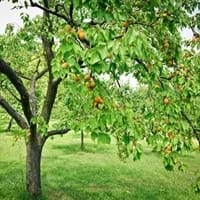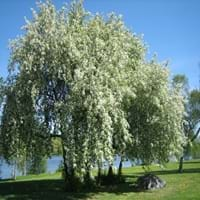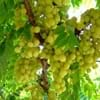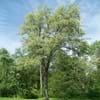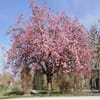Life Span
Perennial
Perennial
Origin
China
Europe, Russia/Siberia, Asia, Central Asia, China, Japan, Korea
Types
Goldcot apricot, Harcot apricot
Alabama Cherry, Wild Cherry, Greyleaf Cherry
Habitat
Cold Regions, Wet lands
Woodland Garden Canopy
USDA Hardiness Zone
4-8
3-8
Sunset Zone
Not Available
A1, A2, A3, 1a, 1b, 2a, 2b, 3a, 3b, 4, 5, 6, 7, 10
Habit
Oval or Rounded
Oval or Rounded
Flower Color
White, Light Pink
White
Flower Color Modifier
Not Available
Bicolor
Fruit Color
Yellow, Orange, Rose
Purple, Black
Leaf Color in Spring
Green
Light Green
Leaf Color in Summer
Green
Green
Leaf Color in Fall
Green
Green
Leaf Color in Winter
Not Available
Not Available
Plant Season
Spring, Summer
Spring
Sunlight
Full Sun
Full Sun, Partial Sun
Type of Soil
Loam, Sand
Clay, Loam
The pH of Soil
Acidic, Neutral, Alkaline
Acidic, Neutral, Alkaline
Soil Drainage
Well drained
Average
Bloom Time
Early Spring, Late Winter
Spring
Tolerances
Not Available
Not Available
Where to Plant?
Ground
Ground
How to Plant?
Grafting, Seedlings
Seedlings, Stem Cutting
Plant Maintenance
Medium
Medium
Watering Requirements
Do not let dry out between waterings, Needs a lot of water initially
Average Water Needs
In Summer
Lots of watering
Lots of watering
In Spring
Moderate
Moderate
In Winter
Average Water
Average Water
Soil pH
Acidic, Neutral, Alkaline
Acidic, Neutral, Alkaline
Soil Type
Clay, Loam, Sand
Clay, Loam
Soil Drainage Capacity
Well drained
Average
Sun Exposure
Full Sun
Full Sun, Partial Sun
Pruning
Remove damaged leaves, Remove dead branches, Remove dead leaves
Pruning during middle of summer, Remove damaged leaves, Remove dead branches, Remove dead leaves, Remove dead or diseased plant parts
Fertilizers
All-Purpose Liquid Fertilizer
Apply 10-10-10 amount
Pests and Diseases
Red blotch
Red blotch
Plant Tolerance
Drought
Not Available
Flower Petal Number
Single
Single
Foliage Texture
Medium
Medium
Foliage Sheen
Matte
Matte
Attracts
Not Available
Birds
Allergy
Headache, Throat itching, Vomiting
Pain and fatigue, Respiratory problems, Toxic
Aesthetic Uses
Beautification, Cottage Garden
Showy Purposes
Beauty Benefits
Glowing Skin, Making cosmetics, Nourishes scalp, Skin cleanser
Not Available
Environmental Uses
Food for animals, Nesting sites for birds, Shadow Tree
Air purification, Nesting sites for birds, Shadow Tree, Shelter for wildlife
Medicinal Uses
Aging, Digestive disorders, Diuretic, Emmoiliant, Ophthalmic
Anodyne, Diuretic, Febrifuge, Sedative
Part of Plant Used
Fruits, Leaves
Bark, Flowers, Fruits, Leaves, Seeds, Wood
Other Uses
Air freshner, Animal Feed, Making Perfumes, Medicinal oil
Used for making dark grey to green dye, Wood is used for cabinet makers
Used As Indoor Plant
No
No
Used As Outdoor Plant
Yes
Yes
Garden Design
Edible, Fruit / Fruit Tree
Screening / Wind Break
Botanical Name
PRUNUS armeniaca
PRUNUS padus
Common Name
Apricot
Bird Cherry
In Hindi
खूबानी
सुंदार वृक्ष
In German
Aprikose or Aprikosenbaum
Vogel Kirschbaum
In French
Abricot or Abricotier
Oiseau Cherry Tree
In Spanish
Albaricoque
Pájaro Cerezo
In Greek
Βερύκοκκο
Bird Cherry Tree
In Portuguese
Apricot
Árvore de cereja do pássaro
In Polish
Morela
Czeremcha drzewa
In Latin
Apricot
Ave Ave ligno
Phylum
Magnoliophyta
Magnoliophyta
Class
Magnoliopsida
Magnoliopsida
Clade
Angiosperms, Rosids
Angiosperms, Eudicots, Rosids
Tribe
Not Available
Acacieae
Subfamily
Not Available
Prunoideae
Season and Care of Apricot and Bird Cherry
Season and care of Apricot and Bird Cherry is important to know. While considering everything about Apricot and Bird Cherry Care, growing season is an essential factor. Apricot season is Spring and Summer and Bird Cherry season is Spring and Summer. The type of soil for Apricot is Loam, Sand and for Bird Cherry is Clay, Loam while the PH of soil for Apricot is Acidic, Neutral, Alkaline and for Bird Cherry is Acidic, Neutral, Alkaline.
Apricot and Bird Cherry Physical Information
Apricot and Bird Cherry physical information is very important for comparison. Apricot height is 460.00 cm and width 460.00 cm whereas Bird Cherry height is 1,500.00 cm and width 600.00 cm. The color specification of Apricot and Bird Cherry are as follows:
Apricot flower color: White and Light Pink
Apricot leaf color: Green
Bird Cherry flower color: White
- Bird Cherry leaf color: Light Green
Care of Apricot and Bird Cherry
Care of Apricot and Bird Cherry include pruning, fertilizers, watering etc. Apricot pruning is done Remove damaged leaves, Remove dead branches and Remove dead leaves and Bird Cherry pruning is done Pruning during middle of summer, Remove damaged leaves, Remove dead branches, Remove dead leaves and Remove dead or diseased plant parts. In summer Apricot needs Lots of watering and in winter, it needs Average Water. Whereas, in summer Bird Cherry needs Lots of watering and in winter, it needs Average Water.
